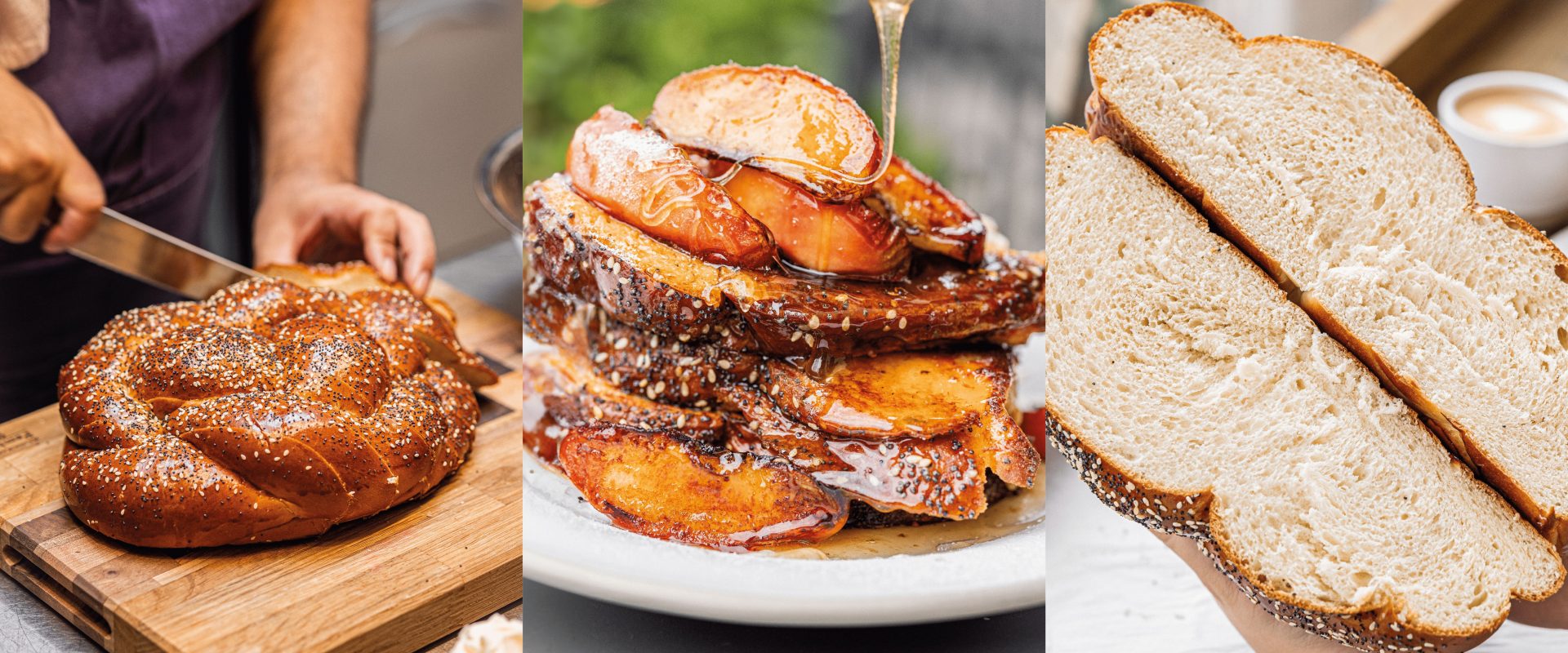Loaves of bread have been central to religious practices for millennia, and in Jewish traditions, making challah at home became a way of connecting to the rituals that took place in the temple.
Traditionally, challah was a loaf of bread beautifully enhanced to celebrate Rosh Hashanah, sweetened with sugar and enriched with all that glorious fat to make it suitably decadent for the occasion. Today, it’s eaten all year round. But challah still comes alive during this festive period, baked in a circle to illustrate the passing of time and the cyclical nature of the seasons. Coming around to a new phase, much like autumn itself.
You’ll find this special round challah at GAIL’s during this season, but we wanted to bring you a recipe that uses stale challah to create something luxurious, with lazy mid-morning feasts in mind. We recommend serving this moreish challah French toast with honey and apples, making it sticky, sweet and sharp, and embracing the season’s nostalgic flavours of the Jewish kitchen.
The Recipe:
Makes 4 toasts
Ingredients:
4 thick slices of stale challah (a day or two old)
3 large eggs (around 180g)
250ml whole milk
250ml double cream
1 tsp ground cinnamon
A pinch of sea salt
1 tsp vanilla extract
2 apples (if you can use the sharp British kind, even better)
50g butter (for frying the bread and apples)
Honey for drizzling
Icing sugar for dusting
Method:
- Whisk the eggs, milk, cream, cinnamon, salt and vanilla in a large shallow dish.
- Arrange the bread slices on top of the custard, letting them soak for a minute or two.
- Gently flip the bread slices and leave them to soak again.
- In a large frying pan, melt a knob of butter over medium heat.
- Carefully, lower two slices of soaked challah to the pan. Reduce the heat a little and fry. The key here is to go low and slow. Take your time here so the toasts cook properly and end up getting that beautiful golden brown colour. The butter should bubble away gently (if it doesn’t, increase the heat slightly). Keep adding more butter as you fry. Don’t be shy, challah is a love letter to butter.
- Flip the toasts and keep frying. You are looking for deep golden brown, ever so slightly caramelised toasts.
- Remove the toasts from the pan. Keep them warm, and repeat the process with the remaining two challah slices.
- While the toasts are frying, slice your apples into 12 wedges.
- Take another pan, melt more butter and cook the apples until they are deeply caramelised. They’ll need to be flipped from time to time to get that golden hue on both sides.
- Serve your toasts on warm plates. Scatter them with apples, drizzle with honey and dust with as much icing sugar as you desire.
